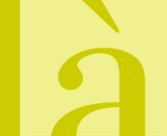
| Sociolingüística internacional |
| The linguistic situation
of South Tyrol, by Albert Branchadell and Joan Manrubia |
||||
| CONTINUA |
Evolution 1880-1991
Source: ASTAT: http://www.provinz.bz.it/astat 1991 data
83% of Italians are concentrated in Bolzano-Bozen, Meran-Merano, Bressanone-Brixen and Laives-Leifers (first, second, third and fourth largest cities in the province respectively, in terms of inhabitants). They constitute the majority in all of these cities, except for Bressanone-Brixen. The Ladins, however, are concentrated in the Dolomite valleys of Val Gardena and Val Badia, where they represent over 90% of the population. 4. Linguistic legislation The language issue in South Tyrol is essentially regulated by the Statute of Autonomy of 1972 (d.P.R. 31st August 1972, No. 670). Given that, in the former Statute of 1948, Italian remained the official language of the Trentino-Alto Adige Region, the new Statute places German "on the same level" as Italian and, hence, official language of the region (Article 99).In accordance with this, Article 100 of the Statute acknowledges the right of German-speaking citizens of South Tyrol to use their language in their relations with law offices and bodies and offices of the public administration located in the province or with regional competence, and with public service franchise companies. In addition, it establishes that these bodies are required to respond to the citizen in the language used by him/her. To a lesser degree, Article 102 also recognises the Ladin language, which did not become the local official language of the Ladin valleys until the d.P.R. of 15th July 1988, No. 574. Articles 99 and 100 of the Statute are the foundations of one of the basic principles for protection of the German-speaking linguistic minority in the province of Bolzano, which was listed for the first time by d.P.R. 26th July 1976, No. 752. It concerns the requirement of bilingualism: knowledge of Italian and German is a requisite for holding a position in the public administrations of the province. This knowledge must be accredited with a bilingualism certificate that is obtained on passing the "bilingualism examination", (certain positions also demand knowledge of Ladin, which is accredited with a trilinguism certificate). The other two basic principles are ethnic proportion (Articles 61 and 89) and education in mother tongue (Article 19). The ethnic proportion system ensures that the proportion of members of each linguistic group in the public administration is similar to the relative proportion of the linguistic groups of the population as a whole. It is important to remember that, in 1975, German- and Ladin-speaking citizens held only 14% of positions in the state administration of the Province, despite the fact that they made up 66.7% of the population. On the other hand, teaching in nursery, primary and secondary schools is performed in the students’ mother tongue (Italian or German) by teachers whose mother tongue is this language. Teaching of the "second language" is compulsory as of the second year of primary school and is also taught by teachers whose mother tongue is this language. In the two Ladin valleys (http://www.istladin.net and http://www.provinz.bz.it/ladin/ipl.htm), Ladin is the vehicular language in nursery schools and is taught as a subject in primary and secondary school (2 hrs/week), in the variety spoken in each valley. Excepting this, teaching is performed in both Italian and German in equal parts. |